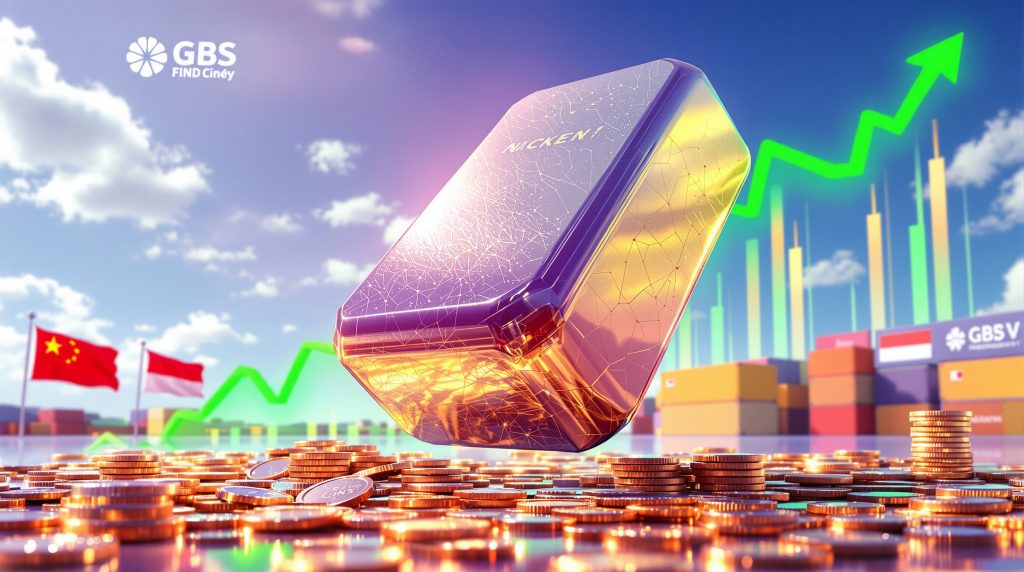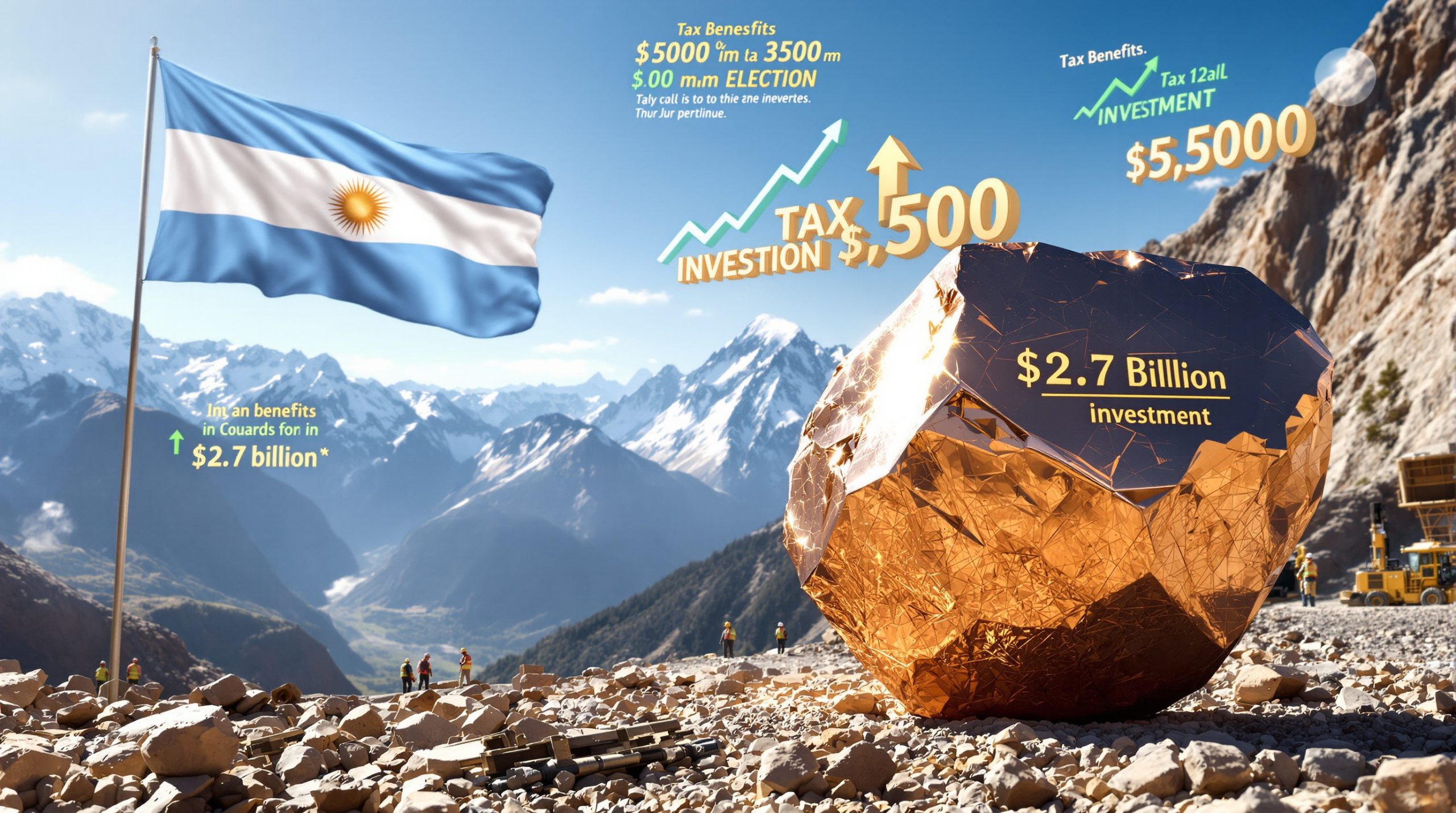What's Behind the Recent Fund Interest in Nickel?
The nickel market has experienced significant volatility in recent years, with prices plummeting to five-year lows around $15,000 per metric ton throughout much of 2025. Despite this bearish trend, investment funds have been steadily building long positions, signaling a growing belief that the market may have reached its bottom. This strategic positioning reflects a calculated bet that fundamental market dynamics are shifting toward a more balanced supply-demand equation.
The London Metal Exchange (LME) nickel contract has been trapped in a surprisingly tight trading range of $14,800-16,000 since May 2025, showing remarkable resilience despite continuously rising inventory levels. This price stability amid growing stockpiles suggests underlying strength that has caught the attention of sophisticated investors.
Market analysts note that funds appear to be making "a collective calculation that if nickel won't go lower, it must at some point move higher," according to a September 2025 Reuters report. This contrarian positioning highlights the growing belief that current prices may already reflect the market's negative fundamentals.
Current Market Fundamentals
LME inventory has reached 308,000 tons, the highest level since the exchange started publishing off-warrant data in early 2020. This persistent inventory build would typically pressure prices lower, yet the market has maintained relative stability.
Investment funds have accumulated 45,321 lots (equivalent to 272,000 tons) in long positions on the LME, representing the strongest bullish engagement since March 2022. This significant position build has occurred despite the apparent oversupply situation.
What makes this positioning particularly notable is the dramatic shift in sentiment, as funds were net short as recently as June 2025 but have been accumulating long positions since mid-April. This transition from bull vs bear perspectives often signals an anticipated market turning point.
How Has Indonesian Production Transformed the Nickel Market?
The fundamental structure of the global nickel market has been completely reshaped by Indonesia's emergence as the dominant producer. What was once a relatively diversified supply landscape has transformed into one overwhelmingly controlled by a single country's production decisions.
The Supply Tsunami Effect
Indonesia's production expansion has created a supply tsunami that has flooded the global market with nickel. According to Macquarie analysis cited by Reuters in September 2025, Indonesian output increased 21% year-on-year to 1.3 million tons in the first half of 2025.
This production surge has positioned Indonesia as the undisputed kingpin of global nickel supply, with the country now representing approximately 69% of worldwide production. No other commodity market exhibits such concentration of supply power in a single nation.
The flood of Indonesian metal has dramatically altered traditional market flows and trading patterns. Chinese refined nickel in LME warranted stocks has risen from zero in August 2023 to 65% by August 2025, demonstrating how Indonesian production is being channeled through Chinese refineries before reaching global markets.
Indonesian metal has also begun entering the LME system directly following brand approval in 2024, with 8,838 tons of warranted Indonesian metal in the system by August 2025. This direct market access represents a significant milestone in Indonesia's vertical integration strategy.
Supply Chain Disruption
The Indonesian production surge has forced significant adjustments throughout the global nickel supply chain, creating casualties among higher-cost producers worldwide. Approximately 500,000 tons of non-Indonesian nickel supply has exited the market in recent years as operations became uneconomical amid price declines.
Traditional nickel mining powerhouses have been forced to curtail production or completely exit the market as they cannot compete with Indonesia's lower-cost integrated operations. This market consolidation has fundamentally altered the industry evolution trends across the mining sector.
The supply chain has reorganized around Indonesia's resource advantage, with ore being upgraded to intermediate products and shipped to China for final processing. This Sino-Indonesian supply ecosystem now dominates global nickel flows and pricing mechanisms.
Why Are Funds Betting on a Price Recovery?
Investment funds appear to be taking an increasingly contrarian view on nickel's price trajectory, building substantial long positions despite the apparent oversupply situation. This strategic positioning suggests a calculated bet on changing market dynamics that could support higher funds betting on nickel price recovery.
Price Floor Formation
Despite the persistent supply glut, nickel prices have demonstrated remarkable resilience, refusing to break significantly below the $15,000 level. This price stability amid growing inventories suggests the market may have established a cost-support floor.
Market observers note that prices have maintained a relatively stable range despite continuously rising LME inventories, a situation that typically would drive prices lower. This divergence between inventory builds and price action often indicates underlying market strength not immediately apparent in headline figures.
The price floor appears to be supported by production economics, as current levels likely represent the cost threshold for many remaining producers. Any sustained move below current prices would potentially trigger additional supply exits, eventually rebalancing the market.
Regulatory Catalysts
Investment funds are positioning for potential regulatory interventions that could significantly alter the market's supply dynamics, particularly from Indonesia, where government policy shapes global nickel availability.
The Indonesian government is establishing a more active regulatory role in the nickel sector, implementing stricter oversight of mining operations. A government task force has been seizing mining plots for lack of forestry permits, signaling a shift toward more rigorous environmental compliance enforcement.
According to Reuters reporting, Indonesia plans to revert to annual production quotas in 2026 to improve governance and control supply. This potential policy shift represents a significant catalyst that could tighten availability in a market currently awash with excess material.
The entire Sino-Indonesian supply ecosystem depends on ore availability, which has been tightening due to a combination of permitting delays, adverse weather conditions, and declining ore grades. These constraints have already forced Indonesia to import nickel ore from the Philippines since early 2024, indicating potential supply vulnerabilities despite overall production growth.
What Supply Factors Could Trigger a Price Rebound?
The path to a sustainable price recovery in the nickel market runs directly through Indonesia, as the dominant producer holds the keys to meaningful supply adjustments. Several emerging factors suggest potential tightening in the supply pipeline that could support the bull case for nickel prices.
Indonesian Production Controls
The most significant potential catalyst for a nickel price recovery lies in Indonesia's approach to managing its dominant production capacity. As the source of approximately 69% of global nickel supply, even modest adjustments to Indonesian output would have outsized market impacts.
Indonesia has experienced permitting delays affecting new production, suggesting potential regulatory friction that could slow capacity expansion. These administrative bottlenecks represent a meaningful constraint on supply growth in a market that requires continued production increases to maintain the current oversupply.
Weather-related disruptions have impacted ore extraction in key mining regions, highlighting the vulnerability of supply chains to environmental factors. These operational challenges can create temporary but meaningful supply deficits that support price recovery.
Declining ore grades are affecting production economics throughout the Indonesian mining sector, potentially forcing reassessments of output targets and project viability. This natural resource constraint could gradually erode Indonesia's production advantage over time.
Indonesia's need to import nickel ore from the Philippines since early 2024 represents perhaps the most telling indicator of supply constraints. This development signals that even the world's largest producer faces challenges in maintaining ore availability for its expanding processing capacity.
Global Production Adjustments
The nickel market's rebalancing depends heavily on production discipline, with Indonesia holding the key to meaningful supply adjustments. Beyond Indonesia, global production has already contracted significantly, with approximately 500,000 tons of non-Indonesian capacity exiting the market in recent years.
Government quota systems could significantly restrict ore availability if implemented effectively. The planned return to annual quotas in 2026 represents a potential mechanism for controlling supply growth and supporting price recovery.
Regulatory enforcement of environmental permits may constrain production, as evidenced by the Indonesian government task force seizing mining plots lacking forestry permits. This increased oversight could limit production from operations not fully compliant with regulatory requirements.
Cost pressures at current price levels are forcing operational reassessments globally, with higher-cost producers facing difficult decisions about continuing operations. Additional supply exits would accelerate market rebalancing and support price recovery.
How Are Different Market Participants Positioned?
The nickel market features diverse participants with varying perspectives on future price direction, creating an interesting dynamic between those betting on continued weakness versus those anticipating recovery. Understanding these positions provides insight into potential market evolution.
Fund Positioning Strategies
Investment funds appear to be taking a contrarian approach to the nickel market, building long positions despite the apparent oversupply situation. This positioning suggests sophisticated investors may be identifying value not immediately apparent in headline market figures.
Some funds may be positioning for a potential short squeeze if supply conditions tighten unexpectedly. With funds holding 45,321 lots (equivalent to 272,000 tons) in long positions, any significant supply disruption or demand increase could amplify price movements through technical positioning factors.
Long-term investors may view current price levels as offering favorable risk-reward dynamics, with limited downside from current cost-support levels while maintaining significant upside potential if market conditions improve. This asymmetric risk profile attracts strategic positioning ahead of anticipated market turns.
Technical traders may be responding to price consolidation patterns suggesting a potential bottoming process. The stability of prices despite rising inventories creates a technical divergence that often precedes directional moves.
Producer and Consumer Dynamics
The prolonged price weakness has created significant challenges for producers while benefiting consumers across various nickel-consuming industries. This imbalance influences market participant behavior and eventual rebalancing.
Many high-cost producers have been forced to curtail or suspend operations as prices have remained below economic thresholds. This production discipline, while painful for individual operations, contributes to eventual market rebalancing by removing supply.
Stainless steel manufacturers have benefited from lower input costs, improving margins in an otherwise challenging global manufacturing environment. These favorable economics have supported stainless production despite broader economic uncertainties.
Battery manufacturers have gained from more affordable nickel for EV applications, potentially accelerating adoption of high-nickel cathode chemistries that deliver superior energy density. This cost advantage supports long-term demand growth while keeping current prices suppressed.
What Role Does Nickel Play in the Energy Transition?
Despite the current oversupply situation, nickel remains a critical minerals & energy security material for the global energy transition, particularly in electric vehicle batteries and renewable energy storage systems. This structural demand driver underpins the long-term investment case despite near-term market imbalances.
Battery Sector Demand
High-nickel cathode chemistries continue to be favored for premium electric vehicles seeking to maximize range and performance. Despite research into alternative chemistries, nickel-rich batteries maintain advantages in energy density that make them difficult to displace in high-performance applications.
Battery manufacturers are seeking to secure long-term nickel supply despite current market conditions, recognizing that future demand growth could outpace supply capacity if Indonesian expansion moderates. This forward-looking procurement strategy supports eventual market rebalancing.
The long-term demand outlook remains positive despite short-term market imbalances, with electric vehicle penetration continuing to increase globally. As EV adoption accelerates, battery-sector nickel demand will represent an increasingly important market segment.
Stainless Steel Fundamentals
While battery applications receive significant attention, stainless steel production continues to account for the majority of nickel consumption, representing approximately two-thirds of global nickel demand. This traditional application provides baseload consumption that underpins the market.
Economic conditions in China significantly impact overall nickel consumption given the country's dominant position in stainless steel manufacturing. Chinese economic performance therefore remains a critical variable in projecting nickel demand trends.
Infrastructure spending and construction activity remain key drivers of stainless steel demand, with global investment patterns influencing consumption trends. Post-pandemic infrastructure initiatives continue to support stainless steel applications in construction, transportation, and energy sectors.
What Are the Risks to a Nickel Price Recovery?
While investment funds appear increasingly bullish on nickel's prospects, significant risks could derail a price recovery scenario. Understanding these challenges provides a balanced perspective on market potential.
Persistent Oversupply Concerns
The most significant risk to funds betting on a nickel price recovery is the potential for continued supply growth outpacing demand. Indonesian production could continue expanding despite regulatory efforts if economic incentives remain sufficiently attractive.
New production technologies might further lower the cost curve, enabling profitable operation even at current depressed price levels. Technological innovation in processing methods has already significantly reduced production costs, particularly in the Indonesian integrated operations.
Chinese processing capacity continues to grow, potentially absorbing more Indonesian ore and maintaining downward pressure on refined nickel prices. This expanding capacity represents a structural headwind to price recovery without corresponding demand growth.
Demand Vulnerability
Nickel demand faces several potential headwinds that could delay market rebalancing and undermine the bull case for prices. Economic slowdowns could impact stainless steel consumption, particularly in construction and manufacturing sectors sensitive to interest rates and broader economic conditions.
EV sales growth might moderate due to subsidy reductions in key markets, potentially slowing battery-sector nickel demand growth. The transition from government support to market-driven adoption represents a critical phase for EV market development.
Battery chemistry innovations could reduce nickel intensity in some applications, with researchers continuously seeking to optimize material usage and cost. Alternative cathode formulations with lower nickel content could capture market share in certain vehicle segments if they deliver adequate performance at lower cost.
How Might the Nickel Market Evolve in Coming Months?
The nickel market stands at a potential inflection point, with fund positioning suggesting growing confidence in recovery prospects despite persistent bearish fundamentals. Several potential catalysts could trigger meaningful market evolution in the coming period.
Price Recovery Scenarios
Investment funds betting on a nickel price recovery are likely considering several potential market evolution scenarios that could validate their bullish positioning. Indonesian government implementation of stricter production quotas represents perhaps the most significant potential catalyst, as even modest output restrictions from the dominant producer would have outsized market impact.
Weather-related disruptions to mining operations could create temporary but meaningful supply constraints, particularly during Indonesia's rainy season when logistics and extraction activities often face challenges. These seasonal factors could provide support for prices even without formal production cuts.
Accelerating demand from battery manufacturers could begin absorbing excess inventory if electric vehicle sales maintain growth trajectories. This demand segment represents a potential growth catalyst independent of traditional stainless steel consumption patterns.
Declining LME inventory levels would signal market rebalancing and likely trigger technical buying that could accelerate price recovery. While inventories currently continue rising, any reversal in this trend would represent a significant bullish indicator.
Market Structure Changes
The nickel market continues to evolve structurally following the extreme volatility of March 2022, when unprecedented price moves led to trading suspension and market disruption. LME trading volumes have been gradually recovering following this episode, suggesting improving market function and liquidity.
Market transparency initiatives have been implemented to prevent recurrence of previous disorderly conditions. These structural improvements provide a more stable foundation for price discovery and risk management.
Risk management practices have been enhanced across the industry following the 2022 volatility episode. These improved protocols should support more orderly market function during future periods of stress or transition.
FAQ: Nickel Market Investment Strategies
Why are funds building long positions despite high inventory levels?
Investment funds appear to be looking beyond current inventory levels to potential supply constraints and cost support levels. The persistent accumulation of long positions suggests a collective assessment that prices have limited downside from current levels while offering significant upside potential if Indonesian production growth moderates or demand accelerates.
This contrarian positioning reflects a forward-looking approach that anticipates market inflection before it becomes obvious in headline figures. Sophisticated investors often build positions during periods of maximum pessimism, when risk-reward dynamics become favorable.
What price targets might funds be targeting for nickel?
While specific price targets aren't publicly disclosed by funds, historical price patterns suggest a return to the $18,000-20,000 per ton range would represent a reasonable medium-term objective if market fundamentals improve. This would represent a 20-30% increase from current levels, providing attractive returns if market fundamentals improve.
A more substantial recovery toward $25,000 per ton would likely require significant supply discipline from Indonesia combined with accelerating demand growth, particularly from the battery sector. This scenario would represent a more dramatic market rebalancing.
How could Indonesian policy changes affect nickel prices?
Indonesian policy changes represent the most significant potential catalyst for nickel price recovery given the country's dominant supply position. The government's shift toward annual production quotas and stricter permitting enforcement could meaningfully constrain supply growth.
Any significant reduction in Indonesian output would likely have an outsized impact on global market balances. With approximately 69% of global production, even modest percentage reductions in Indonesian output would represent substantial tonnage relative to total market size.
What technical indicators support a potential price recovery?
The nickel price has established a relatively stable trading range after significant declines, suggesting potential consolidation before a directional move. The resilience around the $15,000 level despite continuously rising inventories indicates potential cost support and accumulation by longer-term investors.
The divergence between rising inventories and stable prices represents a technical anomaly that often precedes directional price moves. Traditional market dynamics would suggest falling prices amid rising inventories, making the current stability noteworthy.
How might battery demand influence nickel prices in the coming years?
While battery demand currently represents a smaller portion of total nickel consumption compared to stainless steel, its growth rate is significantly higher. Continued expansion of electric vehicle production, particularly in premium segments utilizing high-nickel cathode chemistries, could accelerate demand growth and contribute to market rebalancing.
Battery manufacturers may accelerate strategic stockpiling if they perceive current prices as representing long-term value. This forward procurement behavior could support price recovery ahead of actual consumption increases.
Further Exploration:
Readers interested in learning more about nickel market dynamics can also explore related educational content on magmatic nickel deposits and the Tamarack Nickel Project, which offers additional perspectives on price movements and market trends. Understanding the interplay between Indonesian supply dominance and evolving demand patterns provides valuable context for evaluating potential market trajectories.
Ready to Spot the Next Major Mining Opportunity Before the Market?
Discovery Alert's proprietary Discovery IQ model instantly identifies significant ASX mineral discoveries, transforming complex data into actionable investment insights that put you ahead of other investors. Explore how major discoveries like those in nickel can lead to substantial returns by visiting our dedicated discoveries page.




